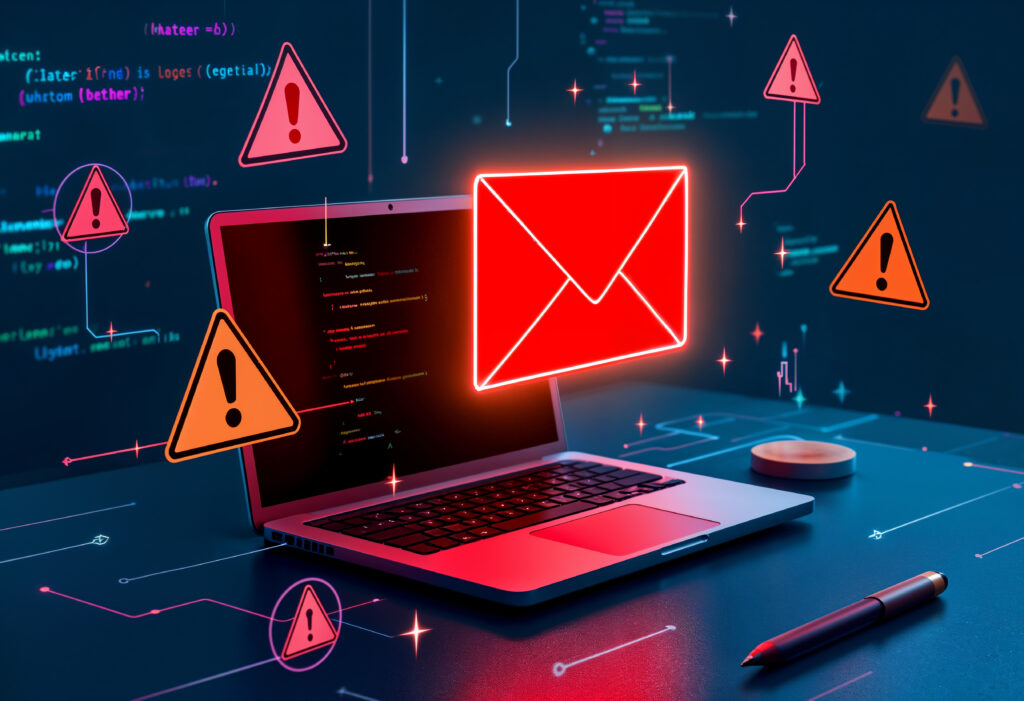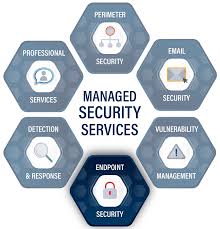Introduction: Gmail Data Breach Warning
In August 2025, Google issued a critical Gmail data breach warning, impacting approximately 2.5 billion users globally. While the attack originated via a Salesforce data breach, no passwords were reportedly exposed. However, the compromised information as contact details and business data—has fueled a surge in phishing, vishing, and impersonation attacks The Times of IndiaTom’s GuideCinco DíasInternational Business Times UKProtonAnalytics Insight.
For Ready-to-Engage Service (RES) clients, understanding the implications and taking prompt action is more than prudent—it’s essential. In this article, we outline what to do, and how expert services can help.
What Happened in the Gmail Data Breach Warning?
Breach Source and Scope
In June 2025, the hacker group ShinyHunters (UNC6040) infiltrated one of Google’s Salesforce databases. Thy did this by impersonating IT staff and tricking an employee into installing malicious software. Cinco DíasProtonForbesAnalytics Insight.
Although passwords cannot exposed, data such as contact details and business profiles were stolen. Now being facilitate targeted scams International Business Times UKAnalytics InsightTrend Micro NewsTom’s GuideThe Sun.

Understanding the Gmail Data Breach Warning
The recent Gmail data breach warning has created widespread concern among users; however, the situation also highlights the urgent need for stronger cybersecurity practices. First of all, millions of users are wondering what specific data was exposed, and as a result, many are rushing to change their passwords. Furthermore, Google has advised users to enable two-factor authentication, and in addition, security experts recommend adopting passkeys for enhanced protection. On the other hand, many individuals still underestimate the risk of phishing attacks, yet these remain the most common entry point for hackers. Moreover, the attackers behind this breach are leveraging contact data to launch sophisticated scams, and consequently, users must stay alert against suspicious emails or calls.
Escalation of Phishing & Vishing Threats
With this data in hand, attackers launched sophisticated phishing and vishing attacks, impersonating Google support via calls, texts, and emails—even using familiar 650 area codes to appear legitimate Tom’s Guide+1News.com.auThe SunProtonTech2GeekThe Independent.
Google’s Warning and Response
Starting August 8, 2025, Google began notifying affected users and publishing guidance. They emphasized that while their systems remain secure, users must alertly protect their accounts Trend Micro NewsCinco DíasThe Economic TimesThe Times of IndiaForbesYahooThe American Bazaar.
Immediate Steps to Secure Your Gmail
Change Your Password Immediately
Even though not necessarily compromised, passwords must change urgently. Especially if reused across websites International Business Times UKThe Indian ExpressTom’s GuideCBS News.
Enable 2-Factor Authentication (2FA) or Use Passkeys
Activate 2FA (via SMS, authenticator apps, or security keys) or adopt passkeys, which offer a stronger defense against phishing-based credential theft Cinco DíasTom’s GuideInternational Business Times UKWikipediaBusiness Insider.
Conduct Google Security Checkup
Use Google’s built-in Security Checkup to review recent account activity, connected apps, recovery options, and settings Trend Micro NewsInternational Business Times UK.
Stay Vigilant Against Phishing
Do not trust unsolicited calls or messages claiming to be from Google—Google never calls to notify users of breaches. Look for fake domain names, overly urgent calls, masked numbers, or spoofed messages Tom’s GuideInternational Business Times UKNews.com.auTech2Geek.

Why Hire a Gmail Security Expert (RES Clients)
Businesses and individuals require resilience—not just reactive defense. Here’s how expert services can help:
Customized Risk Assessment & Audit
Cybersecurity consultants can perform detailed email security audits, assess OAuth permissions, and block unnecessary access points like unused IMAP/POP3 interfaces International Business Times UKTech ObserverWikipedia.
Tailored Implementation of Advanced Protection
Experts assist in enabling Google’s Advanced Protection Program, strong passkey deployment, enterprise-level 2FA, and automated security enforcement policies Tom’s GuideCinco Días.
Incident Response & Remediation
Professionals help monitor for unusual account behavior, remediate suspicious activity, and coordinate remediation plans if compromise occurs. To prevent this, professional Gmail protection services offer long-term resilience
Ongoing Training & Cyber Hygiene
Training employees or clients on spotting phishing/vishing, maintaining password hygiene, and simulated breach exercises (tabletop drills) dramatically reduce human error vulnerability cm-alliance.comBusiness InsiderTom’s Guide.
For more on Google’s official update and user steps, see Google’s Security Checkup blog or support documentation (e.g., Google Help articles).
Background on ShinyHunters’ techniques in previous breaches, refer to analysis by cybersecurity experts or respected tech news sites like Forbes or TechCrunch ForbesProton.
For advanced phishing prevention and passkey guidance, consult cybersecurity platforms like Trend Micro or CISA guides Business InsiderTrend Micro News.
Internal Link (to your service): Link to your company’s “Gmail Security Audit & Protection Services” landing page.

Why an Incident Response Plan Is the Key to Defending Your Gmail Against Data Breaches
When a news headline appears about a Gmail data breach notice, it’s not simply just another viral story. It’s an alarm bell—a wake-up call that your business and personal information is never completely safe on the internet. Internet threats evolve day by day, and the best you can do right now is be prepared for anything. And readiness begins with one top-level asset: an incident response plan.
What Is an Incident Response Plan and Why Does It Matter?
An incident response plan is not necessarily written technical instructions—your digital defense plan. It is more of a fire drill for your online life. You hope never to have to initiate it, but if you do, you’ll be glad it was created. The plan offers a means that you or your company will respond if any suspicious activity occurs in your Gmail or other systems.
How important this cannot be overemphasized. When hackers strike, seconds count. A good response plan guarantees you are quick, isolate the threat, and minimize damage before it spreads. Without one, chaos and panic rule—just what cybercriminals bet on.
React Quick When Suspicious Behavior Happens
Speed is life in cybersecurity. When your Gmail account indicates suspicious logins or messages you didn’t send, hesitation will cost you. That’s when an incident response plan becomes your best friend. It works like a step-by-step cookbook to respond confidently, not in fear.
Think about waking up to discover that your Gmail account has been hijacked. Without a plan, you’d most likely spend hours trying to decide what to do. But with a plan in place, you’d know exactly what to do first—reset passwords, notify your contacts, lock up backup data, and report the problem. You act swiftly, remain composed, and get the situation under control.
This is how intelligent planning converts panic into protection.
Why Having Experts Available to Call Changes Everything
In cybersecurity, having experts available to call can be the difference between security and disaster. These experts know how cyberattacks operate and how to prevent them from destroying your data or reputation.
A cybersecurity professional is like your virtual bodyguard. The moment there is suspicious action, they spring into action. They study the breach, find the vulnerability, and block the further attempt. Their swift action usually saves gargantuan losses—both in data as well as trust.
For companies, particularly those with multiple Gmail accounts and sensitive data, professional response teams are worth their weight in gold. They don’t merely fix issues—they foster resilience. In today’s ever-accelerating cyber landscape, professional incident response services are not a nicety; they are a necessity.

Turning Uncertainty into Digital Resilience
We are living in an uncertain age where cyber threats can emerge at any moment. But uncertainty does not have to equate to vulnerability. The correct professional help and security perspective can turn uncertainty itself into digital resilience.
That’s the true strength of an incident response plan. It doesn’t merely assist you in surviving a cyberattack—it enables you to emerge stronger. You learn from every incident, strengthen your defenses, and adopt an anticipatory mindset toward cybersecurity.
Professional security services for Gmail advance this concept even further. They integrate sophisticated monitoring capabilities with human intuition, so each malicious attempt is monitored and rectified in real-time. The end result? A more secure, safer, and more confident online presence.
The Gmail Data Breach Warning: More Than Just a Headline
Data breach headlines have become all too familiar that most individuals scroll past them without worry. However, the latest Gmail data breach alert should not be taken lightly. It’s a stark reminder that cyberattacks are closer than we believe—and any individual can be the next victim.
This isn’t about fear. It’s about awareness. One hacked account can reveal personal information, business data, or even financial information. That’s why this alert is not only news—it’s an action item.
What you do today will keep you safe tomorrow. Whether you’re a user or an administrator, it’s time to secure your Gmail security before the next attack.
How Individuals Can Protect Their Gmail Accounts
For people, data protection starts small but is made up of habits. Begin by turning on two-step verification for your Gmail account. This one action stops the majority of unauthorized login attempts.
Then use a different password from all other sites. Cybercriminals use stolen passwords from one website to log into others. A strong, single-use password for Gmail adds an extra level of protection.
Check your Gmail security settings regularly. Google offers a “Security Checkup” feature where you can check connected devices, login history, and suspicious activity. Monitoring these pieces of information can prevent you from significant problems in the future.
Finally, be vigilant. If you get unusual emails or links, check their origin before you click. Vigilance is your best protection against online threats.
FAQs: Gmail data breach warning
| FAQ | Answer |
| Was my Gmail password leaked? | No evidence suggests passwords were stolen, but they should be changed anyway. |
| What’s the biggest risk from this breach? | Enhanced phishing/vishing impersonating Google support, using stolen contact data. |
| Is 2FA sufficient? | 2FA greatly reduces risk. For top-tier security, add passkeys and enroll in Advanced Protection. |
| Can experts really help? | Yes—through audits, security programming, training, and incident response, experts can drastically improve safety. |
| Should my business prepare differently? | Absolutely. Use customized security policies, employee phishing simulations, and stricter access controls. |
Final Thoughts: Gmail data breach warning
The Gmail data breach warning is a wake-up call to all users: even when systems themselves remain secure, external integrations and social engineering can expose us. As credentials become a battleground, the smartest defense combines tech safeguards like strong passwords, 2FA, passkeys, and Security Checkups with expert-driven audit, response planning, and employee education.For Ready-to-Engage IT Service (RES) clients in the USA, now is the time to partner with skilled professionals who can transform reactive panic into sustainable resilience. Secure your Gmail—don’t wait for the next exploit.







